Hvitserkur, Iceland
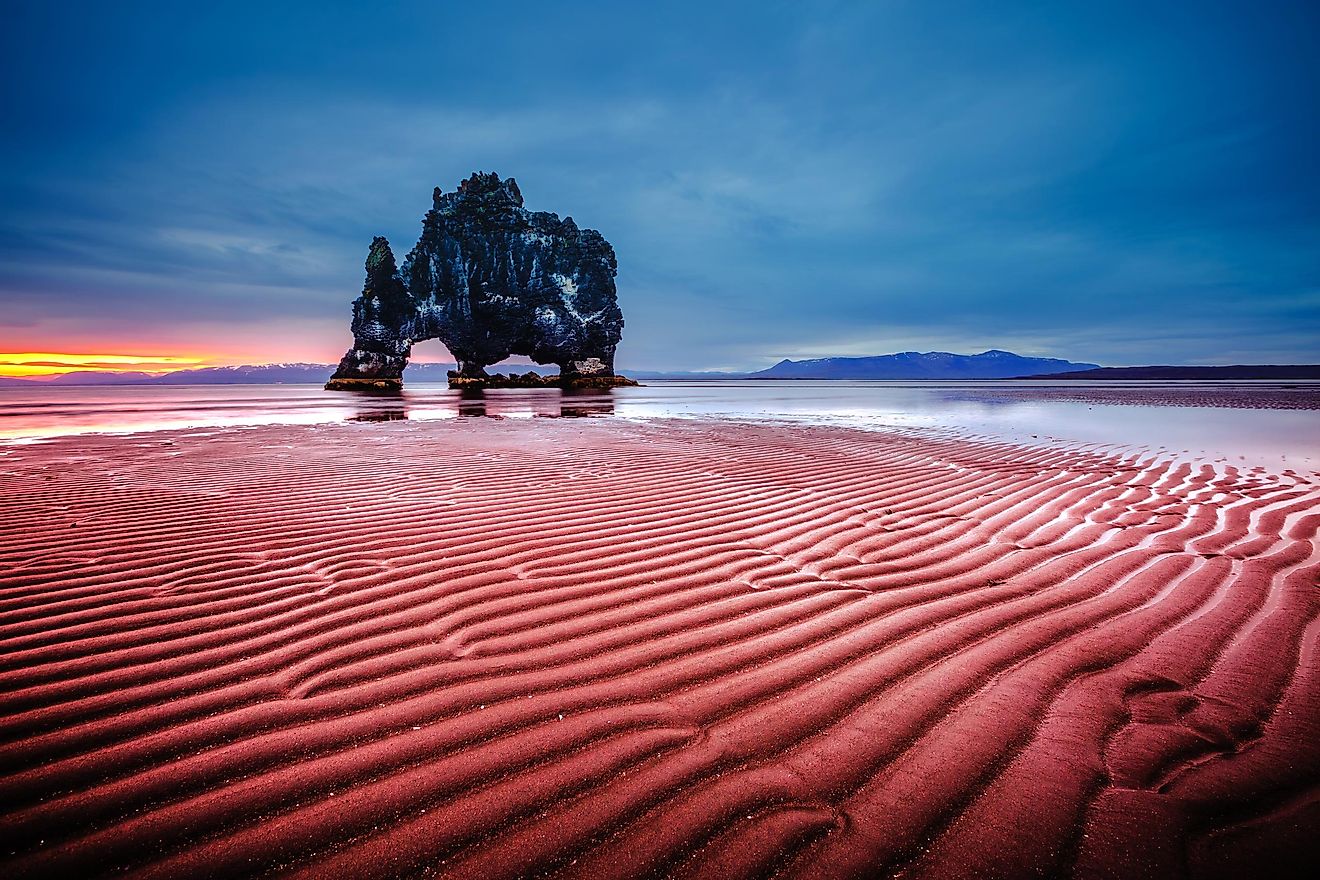
The magnificent and awe-inspiring Hvítserkur (White Shirt in Icelandic) is more popularly known as the "Dinosaur of Iceland. Hvítserkur is located along the eastern shore of the Vatnsnes peninsula in North-West Iceland. It is a much visited peak, that is found in the region near Nordur-Mulasysla, which itself lies at an elevation of 1171 feet above sea level. There are not a lot of people residing in the area, and the town nearest to the formation has a population of only around 50,000 people.
Climate
Temperatures at the Hvítserkur remain fairly constant the whole day, and in fact the whole year, which explains its lack of distinct seasons. It is warmest there in July, and the coldest average temperature is 22.1oF in the evenings. In Winter, freezing periods are prolonged, with March being the coldest month, and May being the sunniest and also the driest month. Rainfall is usually most expected towards the end of the year, in December.
The Impressive Rock Formation
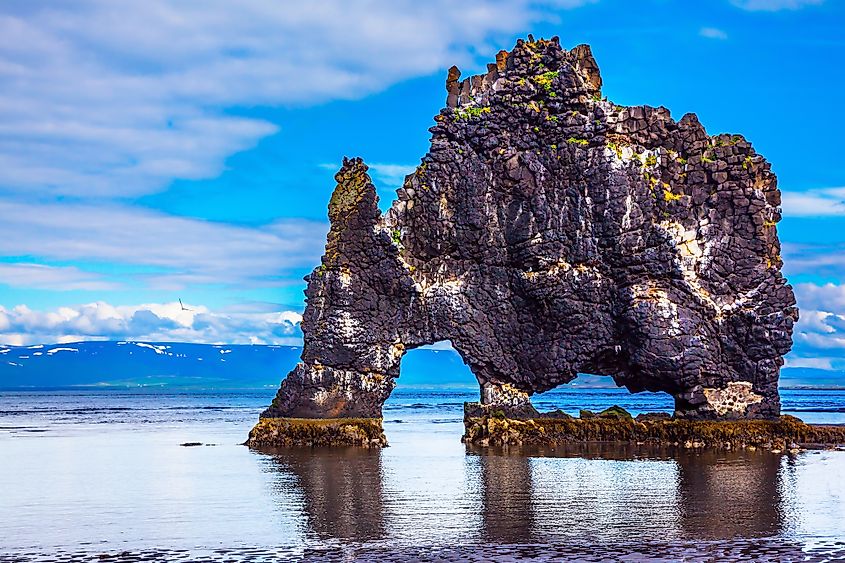
The Hvítserkur rock formation is half white, due to droppings from the fulmar birds nesting on it, which to many makes it look even more alive and captivating. At the base of the rock are two holes, giving the Hvítserkur the look of a dragon taking a drink. To protect its foundation from the threat of erosion caused by the salty sea water, the base has been reinforced with concrete.
A Popular Tourist Attraction
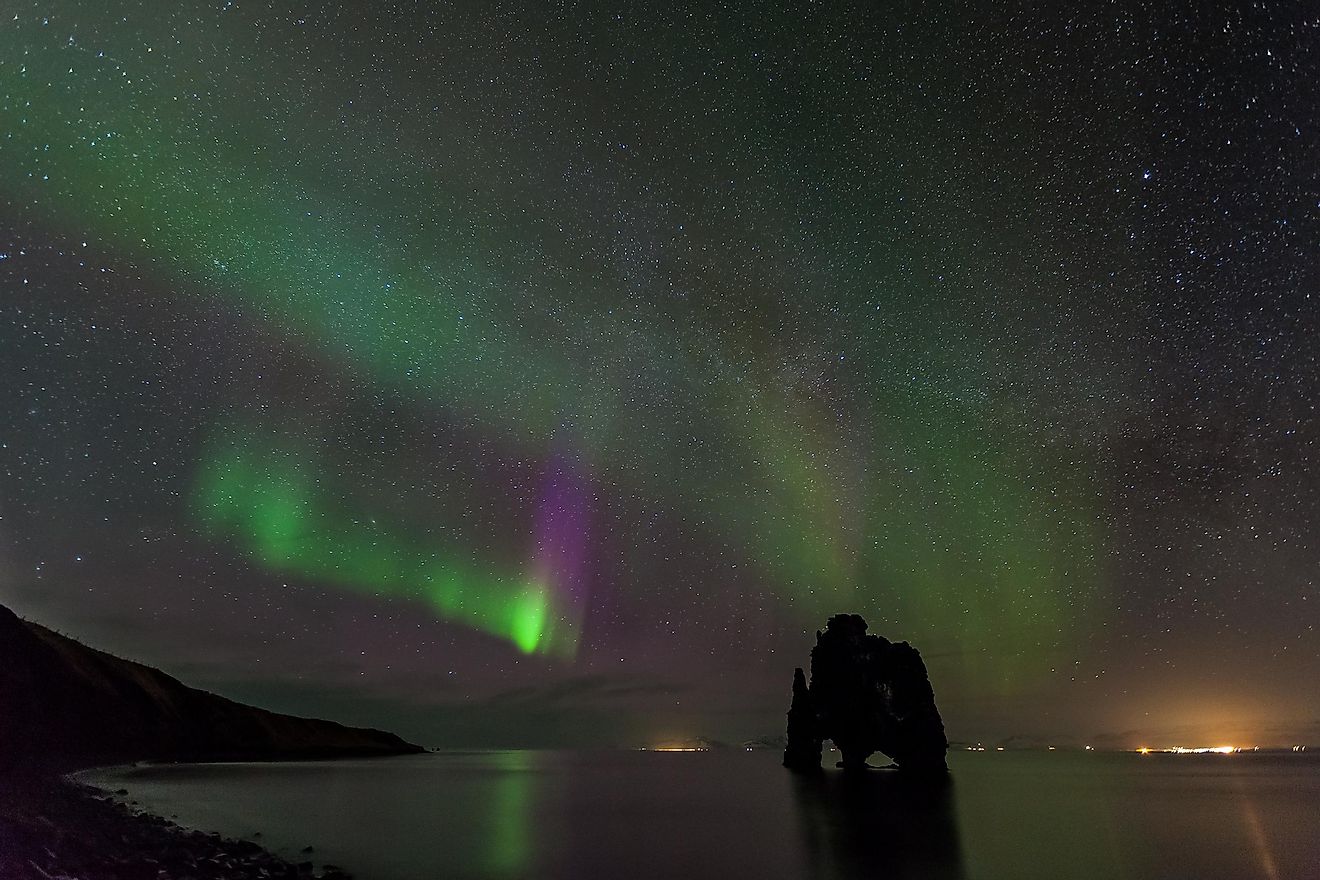
In order to enjoy the majestic view of the Northern Lights upon the site, tourists are advised to visit the magnificent Hvítserkur between the middle of September and the middle of April, which is when the nights are completely dark in Iceland. The surrounding area is best explored using a rental car, that is so long as you don’t mind a bit of a bumpy ride across the rough shoreline. Benches and tables are available at the parking lot by Ósar, which you can get to via a gravel road. An alternative route passes through Road 7111 off of Ring Road 1, upon which one can travel in a semi-circle about the entire Vatnsnes Peninsula.
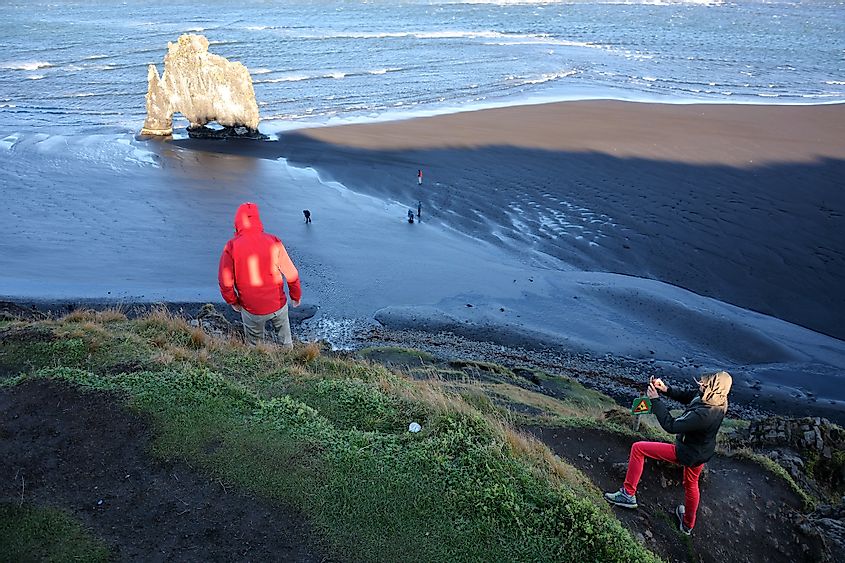
From the shore, you can walk directly to this 49 feet (15 meters) high, animal-shaped monolith although, should you opt to take this route, you will do well to arm yourself with a stick or an umbrella. In Summer, visitors often find themselves having to chase away the many Arctic tern or krías (Icelands’s national bird, depicted on their postage stamps) that are scattered all about the location. These birds are much loved by the locals for their protective nature. This is not so much so for the tourists, as these birds are very aggressive, and will readily attack anyone who dares to come close to their nests, or any other bird's nest for that matter.
Wildlife Viewing
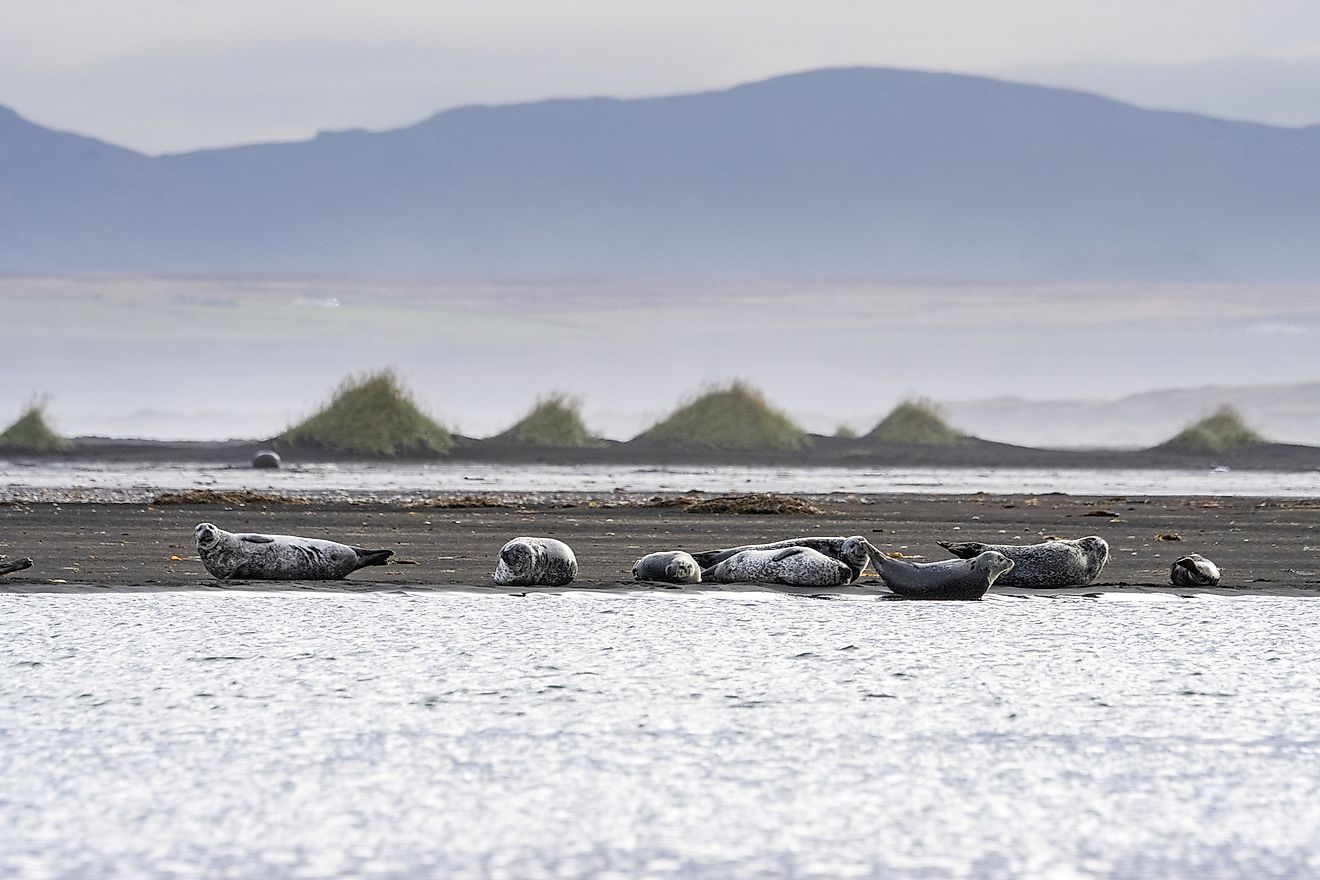
Visiting Hvítserkur, you might soon find yourself observing one of the largest colonies of seals in Iceland. Along the shore, you can also feast your eyes on large blue- and golden-colored jelly fishes that are washed up by the tides. Numerous native species of birds, such as fulmars and gulls, abound in the area. Off the opposite side of the peninsula, you can visit the town of Hvammstangi, which is 197 kilometers north of Reykjavík. While there, you can find loads of information about the seals at an Icelandic Seal Center.
Friendly People
The rural towns near Hvítserkur depend largely on agriculture, industry, trade, and fishing for their livelihoods. The people living within them are known for their hospitable, polite demeanors, and the fact that they are always ready to celebrate just about any occasion. In fact, the 2015 Legatum Prosperity Index listed Iceland as the 2nd Most Safe and Secure country in the world, and the 18th Healthiest, and the 12th best country to live in overall. Food and accommodations are readily available in the Peninsula of Vatnsnes, making touring the surrounding villages not only informative, but also quite pleasant. The cold temperatures also reduce risks of food poisoning. For such reasons, a trip to Iceland to visit Hvítserkur just may be one of the safest overseas vacations one could ever plan to make, aside from the risk of incurring a few pecks from nesting birds.







